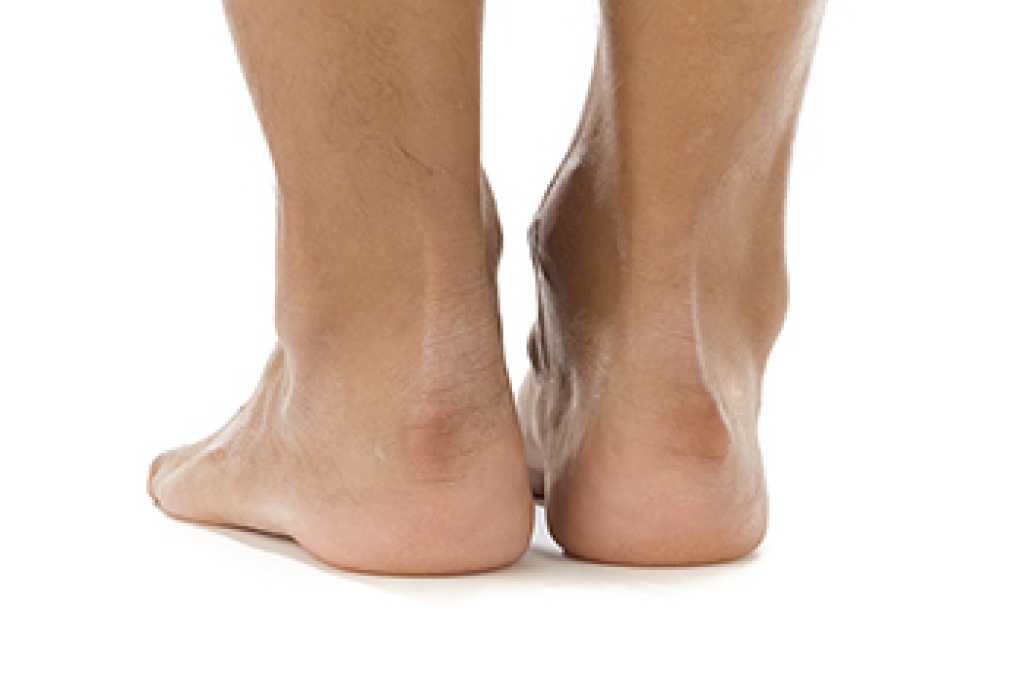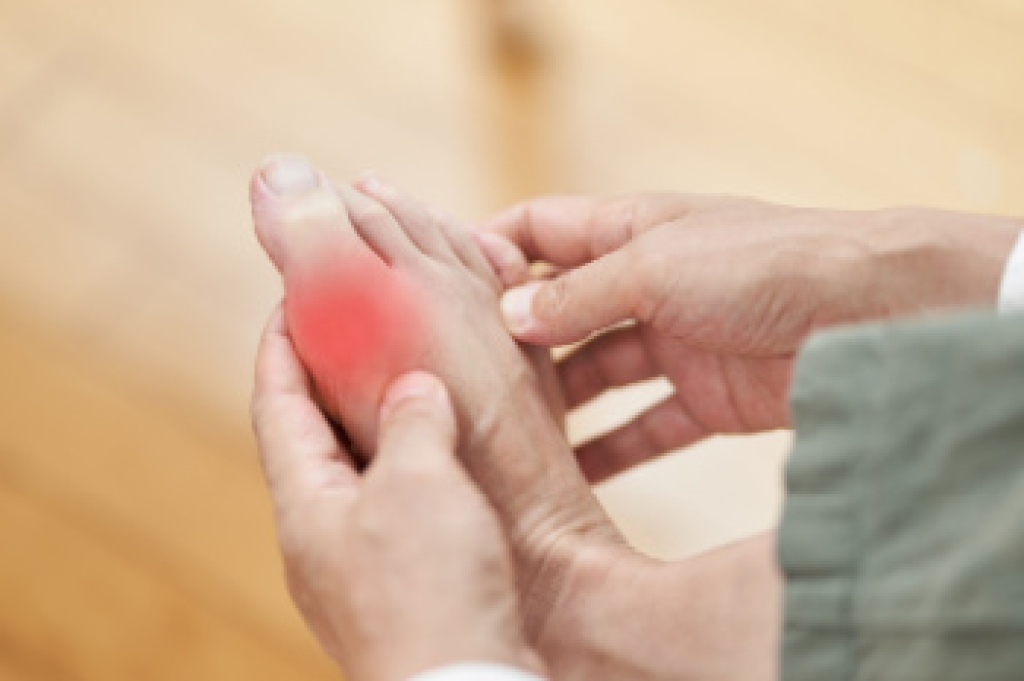Blog
Types of Bunion Surgery

Bunion surgery is used to correct a painful bony bump that forms at the base of the big toe and interferes with normal foot alignment. Several types of bunion surgery exist depending on severity and joint condition. An exostectomy involves removing the enlarged bone to reduce pressure and irritation. An osteotomy corrects the deformity by cutting and realigning the bone to restore proper positioning, and arthrodesis, used for more advanced cases, involves fusing the joint to relieve pain and improve stability. Each approach is selected to reduce discomfort and improve function. A podiatrist evaluates foot structure, symptoms, and lifestyle needs to determine the most appropriate surgical or nonsurgical care. If bunion pain is limiting walking or daily activities, it is suggested that you schedule a consultation with a podiatrist to explore treatment options and steps toward lasting foot relief.
Foot surgery is sometimes necessary to treat a foot ailment. To learn more, contact Judson Siegel, DPM of Assabet Family Podiatry. Our doctor will assist you with all of your foot and ankle needs.
When Is Surgery Necessary?
Foot and ankle surgery is generally reserved for cases in which less invasive, conservative procedures have failed to alleviate the problem. Some of the cases in which surgery may be necessary include:
- Removing foot deformities like bunions and bone spurs
- Severe arthritis that has caused bone issues
- Cosmetic reconstruction
What Types of Surgery Are There?
The type of surgery you receive will depend on the nature of the problem you have. Some of the possible surgeries include:
- Bunionectomy for painful bunions
- Surgical fusion for realignment of bones
- Neuropathy decompression surgery to treat nerve damage
Benefits of Surgery
Although surgery is usually a last resort, it can provide more complete pain relief compared to non-surgical methods and may allow you to finally resume full activity.
Surgical techniques have also become increasingly sophisticated. Techniques like endoscopic surgery allow for smaller incisions and faster recovery times.
If you have any questions, please feel free to contact our offices located in Plainville, Marlborough, and Somerset, MA . We offer the newest diagnostic and treatment technologies for all your foot care needs.
What Is Hagland’s Deformity?

Hagland's deformity is a bony enlargement on the back of the heel that often develops where the Achilles tendon attaches. It is commonly caused by wearing rigid footwear or high heels, repetitive irritation, or inherited foot structure. This condition may look like a noticeable bump on the back of the heel, and is often accompanied by redness or swelling. It can feel sore, stiff, tender, or painful, especially when wearing closed shoes or during walking and exercise. Some people experience aching or burning sensations as the surrounding tissue becomes inflamed. A podiatrist can help from the start by performing a thorough examination, reviewing footwear habits, assessing biomechanics, and using imaging, if needed for confirmation. Treatment may include shoe modifications, padding, stretching programs, and inflammation management to relieve pressure and discomfort. Early care can prevent worsening symptoms and improve daily comfort. If you have heel pain, it is suggested that you schedule an appointment with a podiatrist for an accurate diagnose and effective treatment solutions.
Many people suffer from bouts of heel pain. For more information, contact Judson Siegel, DPM of Assabet Family Podiatry. Our doctor can provide the care you need to keep you pain-free and on your feet.
Causes of Heel Pain
Heel pain is often associated with plantar fasciitis. The plantar fascia is a band of tissues that extends along the bottom of the foot. A rip or tear in this ligament can cause inflammation of the tissue.
Achilles tendonitis is another cause of heel pain. Inflammation of the Achilles tendon will cause pain from fractures and muscle tearing. Lack of flexibility is also another symptom.
Heel spurs are another cause of pain. When the tissues of the plantar fascia undergo a great deal of stress, it can lead to ligament separation from the heel bone, causing heel spurs.
Why Might Heel Pain Occur?
- Wearing ill-fitting shoes
- Wearing non-supportive shoes
- Weight change
- Excessive running
Treatments
Heel pain should be treated as soon as possible for immediate results. Keeping your feet in a stress-free environment will help. If you suffer from Achilles tendonitis or plantar fasciitis, applying ice will reduce the swelling. Stretching before an exercise like running will help the muscles. Using all these tips will help make heel pain a condition of the past.
If you have any questions, please feel free to contact our offices located in Plainville, Marlborough, and Somerset, MA . We offer the newest diagnostic and treatment technologies for all your foot care needs.
Causes of Diabetic Foot Ulcers

Diabetic foot ulcers are open sores that develop on the feet of individuals with diabetes, often forming on pressure points such as the heels or toes. These wounds progress through stages, beginning as redness or skin breakdown and advancing to deeper tissue involvement, if not treated. Causes include poor blood sugar control, neuropathy that reduces sensation, blood flow problems that slow healing, and improper shoes that create friction or pressure. Without proper care, ulcers can worsen and lead to serious complications. A podiatrist can help by assessing the wound, removing damaged tissue, improving pressure distribution, and guiding proper foot care to support healing. If you have diabetes and notice any signs of a foot ulcer, it is strongly suggested that you promptly schedule an appointment with a podiatrist who can help you to manage this serious condition.
Diabetic foot care is important in preventing foot ailments such as ulcers. If you are suffering from diabetes or have any other concerns about your feet, contact Judson Siegel, DPM from Assabet Family Podiatry. Our doctor can provide the care you need to keep you pain-free and on your feet.
Diabetic Foot Care
Diabetes affects millions of people every year. The condition can damage blood vessels in many parts of the body, especially the feet. Because of this, taking care of your feet is essential if you have diabetes, and having a podiatrist help monitor your foot health is highly recommended.
The Importance of Caring for Your Feet
- Routinely inspect your feet for bruises or sores.
- Wear socks that fit your feet comfortably.
- Wear comfortable shoes that provide adequate support.
Patients with diabetes should have their doctor monitor their blood levels, as blood sugar levels play such a huge role in diabetic care. Monitoring these levels on a regular basis is highly advised.
It is always best to inform your healthcare professional of any concerns you may have regarding your feet, especially for diabetic patients. Early treatment and routine foot examinations are keys to maintaining proper health, especially because severe complications can arise if proper treatment is not applied.
If you have any questions, please feel free to contact our offices located in Plainville, Marlborough, and Somerset, MA . We offer the newest diagnostic and treatment technologies for all your foot care needs.
Gout and Management Tips From a Podiatrist

Gout is a form of inflammatory arthritis that occurs when uric acid crystals build up in a joint, most commonly at the base of the big toe. It often begins suddenly and causes intense pain, swelling, redness, and warmth that can make even light touch uncomfortable. Risk factors include obesity, high blood pressure, kidney disease, and diabetes, all of which can increase uric acid levels in the body. Gout attacks may recur if the underlying cause is not addressed. A podiatrist can evaluate the affected joint, confirm the diagnosis, and create a personalized plan that may include lifestyle guidance, footwear changes, and targeted treatments to reduce inflammation. If you have symptoms of gout, it is strongly suggested that you are under the care of a podiatrist who can help you to manage this painful condition.
Gout is a foot condition that requires certain treatment and care. If you are seeking treatment, contact Judson Siegel, DPM from Assabet Family Podiatry. Our doctor will treat your foot and ankle needs.
What Is Gout?
Gout is a type of arthritis caused by a buildup of uric acid in the bloodstream. It often develops in the foot, especially the big toe area, although it can manifest in other parts of the body as well. Gout can make walking and standing very painful and is especially common in diabetics and the obese.
People typically get gout because of a poor diet. Genetic predisposition is also a factor. The children of parents who have had gout frequently have a chance of developing it themselves.
Gout can easily be identified by redness and inflammation of the big toe and the surrounding areas of the foot. Other symptoms include extreme fatigue, joint pain, and running high fevers. Sometimes corticosteroid drugs can be prescribed to treat gout, but the best way to combat this disease is to get more exercise and eat a better diet.
If you have any questions, please feel free to contact our offices located in Plainville, Marlborough, and Somerset, MA . We offer the newest diagnostic and treatment technologies for all your foot care needs.

